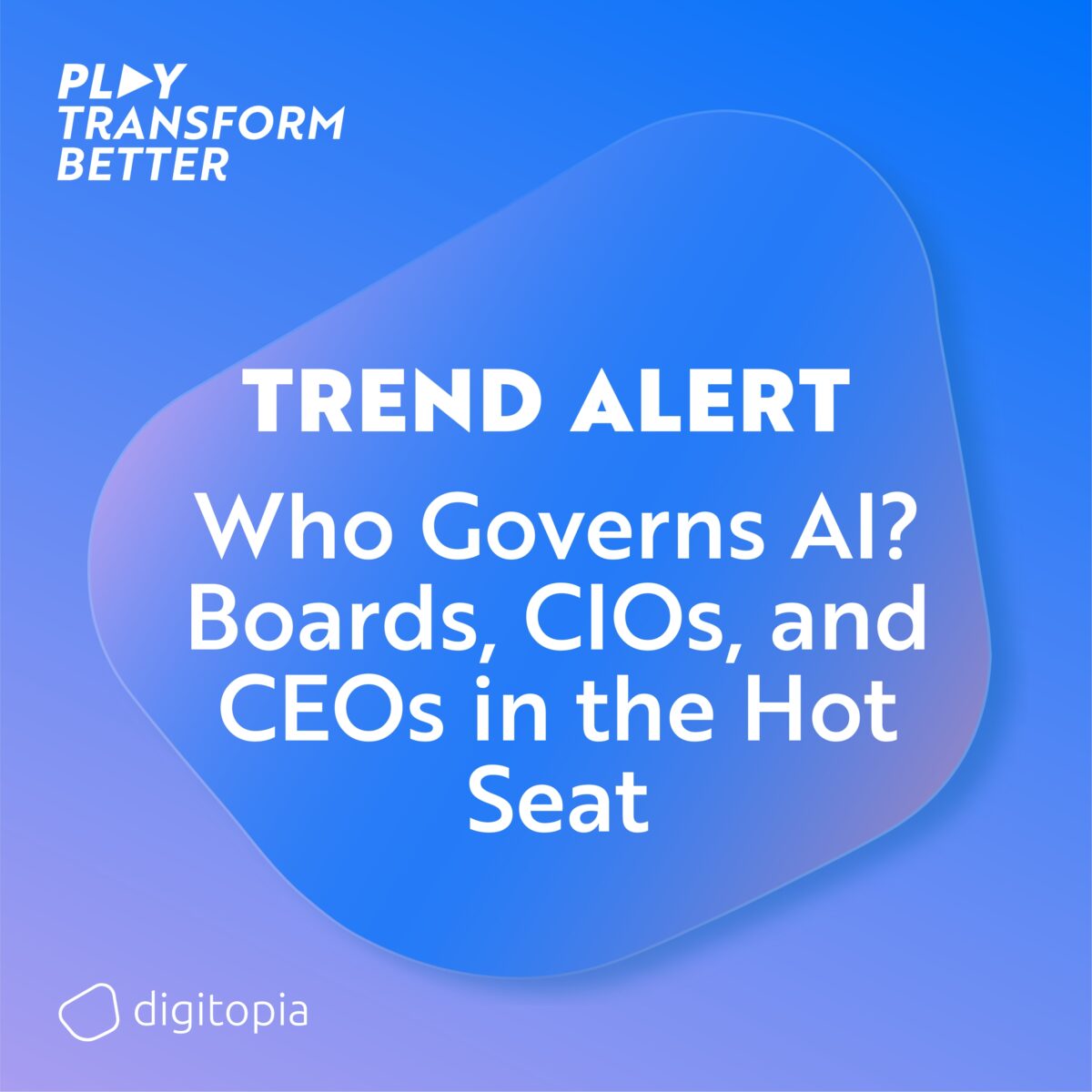
Listen on
Episode Description
Who is actually in charge of AI inside a company? At first, it sounds like a technical question. But really, it’s a question of leadership.
AI is no longer a future promise. It’s already deployed, shaping products and decisions. The pace of adoption has completely outstripped accountability. Businesses are at a crossroads: step up and define AI governance internally, or risk having competitors — or regulators — define the rules for them.
Boards Flying Blind
Boardrooms are greenlighting massive AI investments. Strategies, budgets, new initiatives — all moving fast. But many directors don’t fully understand the technology they’re approving.
This creates what experts call a governance crisis. Without basic AI literacy, boards can’t ask the right questions:
- What data is training the AI?
- How do we prevent bias?
- What’s the real risk if a system fails?
Approving investments without comprehension is like buying a high-performance car because the paint looks nice — without ever checking the engine or brakes. Boards must shift from asking, “Are we spending enough on AI?” to “Are we governing our AI responsibly?”
The Governance Gap for CIOs
If the board lacks literacy, the weight falls on the CIO. Here lies the AI governance gap — adoption sprinting ahead while oversight crawls behind.
Departments run experiments. Vendors push new tools. Teams bypass IT to move faster. The result? AI sprawl — multiple models in production, sometimes touching sensitive customer data, and no central inventory.
Without frameworks, monitoring, or audit trails, security and compliance collapse. The risk isn’t just operational chaos — it’s liability. A breach in an unknown third-party model could put the entire enterprise at risk.
The solution? CIOs must build governance “control towers”: mandatory audit trails, model monitoring, and ethical reviews. At first it may feel like bureaucracy, but in reality it’s the discipline required to scale AI safely.
CEOs and CIOs: A New Strategic Partnership
AI isn’t just IT’s problem anymore. It’s a core strategic lever. Product development, customer interaction, competitive advantage — all shaped by AI.
This is redefining the CEO–CIO relationship. CIOs are no longer back-office operators. They’re becoming co-authors of growth strategy. They bring not only technical expertise, but the ability to ensure innovation is secure, compliant, and aligned with business priorities.
Without that partnership, companies risk flashy tech that doesn’t deliver value — or worse, introduces hidden risks.
World-Class IT in the Gen AI Era
So what does world-class IT look like now?
It’s a balance: agility with discipline.
IT must enable rapid experimentation, helping the business innovate and stay competitive.
At the same time, IT must enforce governance and security, preventing agility from turning into chaos.
The role of IT is shifting from cost center to growth engine. Success is no longer measured just in uptime, but in innovation velocity and tangible business outcomes.
Risk Budgets Are Rising
The budget signals prove the point. Enterprises are planning significant increases — around 25% more spending — specifically for AI governance and compliance.
The message is clear: governance is now as essential as R&D. Without it, “cool pilots” quickly turn into liability bombs. Oversight isn’t a side note anymore — it’s the insurance policy for innovation.
Mass Adoption: One in Three Workers Using AI
The urgency is amplified by adoption rates. In the U.S., 28% of workers already use AI tools like ChatGPT in their jobs.
This mass adoption is fueling shadow AI — employees using tools faster than companies can govern them. Productivity expectations shift instantly. If official AI workflows aren’t provided, workers will find their own, often unsecure, solutions.
Leaders can’t afford to be reactive. AI is already shaping how work gets done. Governance must keep pace.
Conclusion: The Leadership Test
Three things are now non-negotiable:
- Leadership literacy — Boards and executives must stop flying blind.
- Proactive governance — CIOs must close the governance gap before sprawl becomes unmanageable.
- Strategic partnership — CEOs and CIOs must co-author growth strategies where AI is a disciplined engine, not a risk.
AI is not just another tech rollout. It’s a test of leadership. The winners won’t be those who adopt the most AI, but those who control, align, and scale it responsibly.
The defining question: will you govern AI within your company, or let external forces — competitors and regulators — decide for you?




